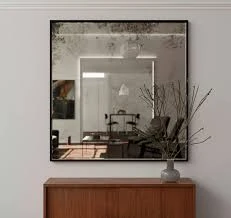

The Beauty and Significance of Glass Patterns
Glass has long been a medium of artistic expression, and within this versatile material lies a captivating world of patterns. The term glass patterns refers not only to the aesthetic designs that adorn glass surfaces but also to its structural and functional roles in architecture, art, and daily life. This article explores the multifaceted nature of glass patterns, their historical significance, and their contemporary applications.
Historically, glassmaking can be traced back to ancient civilizations, where artisans would meticulously create various forms of glass with intricate designs. In ancient Egypt, glass objects often showcased vibrant colors and intricate engravings, reflecting the importance of symbolism in their culture. Similarly, the Romans developed advanced techniques such as blown glass, which allowed for even more elaborate patterns and designs. The tradition of decorative glass continued through the Middle Ages with the creation of stained-glass windows that adorned cathedrals across Europe. These windows not only served a functional purpose, allowing light to enter, but also narrated biblical stories through colorful, patterned designs that captured the imagination of onlookers.
The Beauty and Significance of Glass Patterns
Beyond artistic endeavors, glass patterns play crucial roles in architecture and interior design. Architects today frequently utilize patterned glass in their structures to enhance visual appeal while maintaining privacy and controlling light. Examples include patterned glass facades on commercial buildings, where intricate designs can serve as both functional shading devices and attractive exterior elements. Additionally, patterned glass is increasingly used in residential settings, such as bathroom windows or partitions, where it can allow light to flow while obscuring views.

Moreover, the evolution of digital technology has created exciting possibilities for customized glass patterns. Laser cutting and digital printing enable the creation of bespoke designs tailored to individual preferences, pushing the boundaries of creativity. This accessibility encourages not only established artists but also amateur creators to experiment with glass patterns, leading to a democratization of design.
In recent years, glass patterns have also found their place in sustainable design. With a growing focus on eco-friendly materials, artists and architects are exploring innovative ways to harness the properties of glass for energy efficiency. For instance, glass can be treated to maximize solar gain or minimize heat loss, contributing to greener builds while integrating stunning patterns that enhance aesthetic appeal.
The fascination with glass patterns extends beyond their visual allure; they embody the intersection of art, engineering, and nature. The ability of glass to refract light creates a dynamic interaction between the viewer and the environment, enriching experiences and provoking thought. When light hits patterned glass, it produces a mesmerizing play of colors and shadows, transforming spaces into living works of art.
In conclusion, glass patterns encapsulate a rich blend of history, artistry, and modern innovation. From their roots in ancient craftsmanship to their contemporary applications in architecture and design, these intricate designs continue to inspire and captivate. As technology advances and sustainability becomes a core principle in design, the exploration of glass patterns will likely expand, unlocking new creative possibilities and further enhancing our appreciation for this beautiful medium. Whether through stained-glass stories of the past or the sleek, modern designs of today, the legacy of glass patterns endures, inviting us to look closer and appreciate the beauty that can be found in this unique art form.